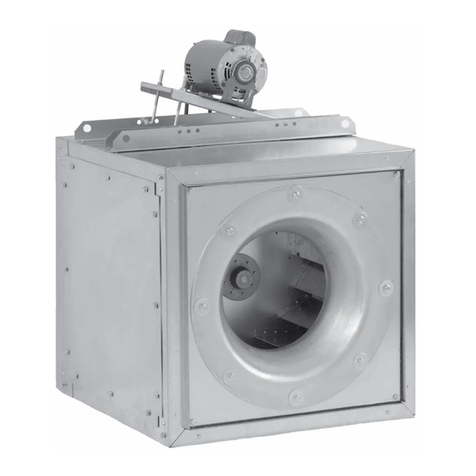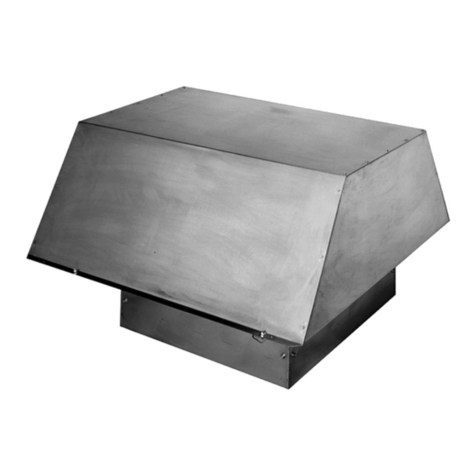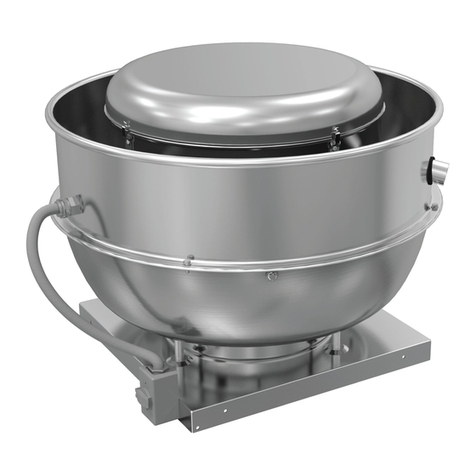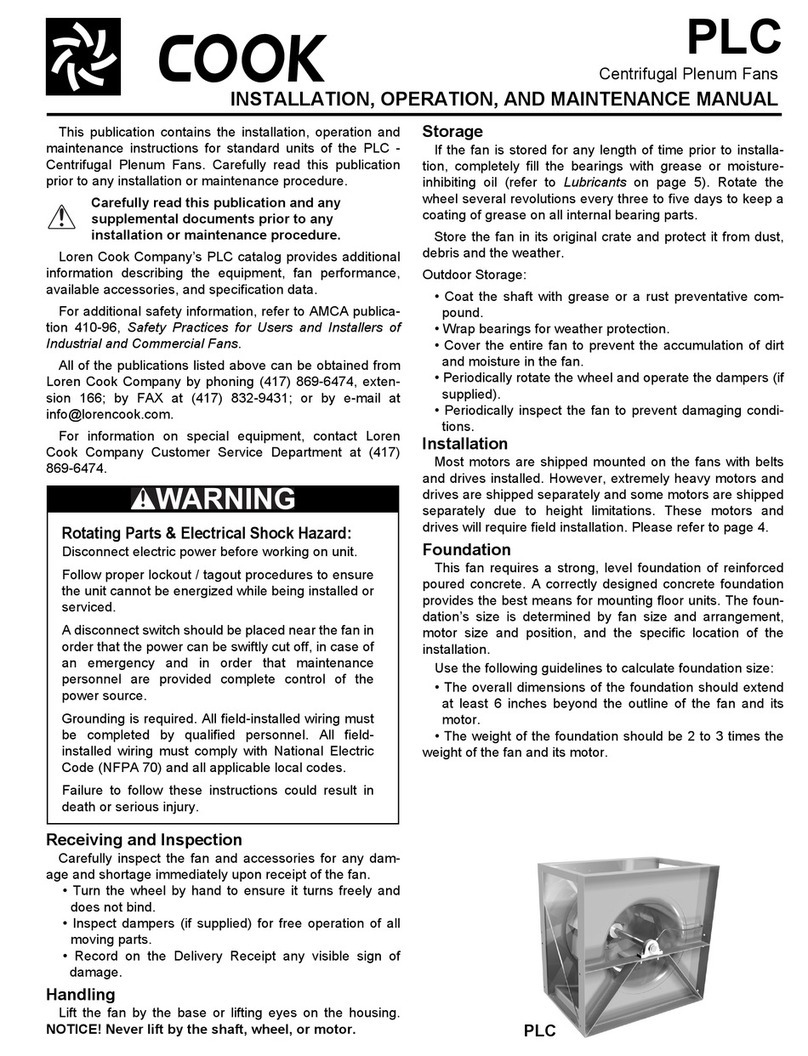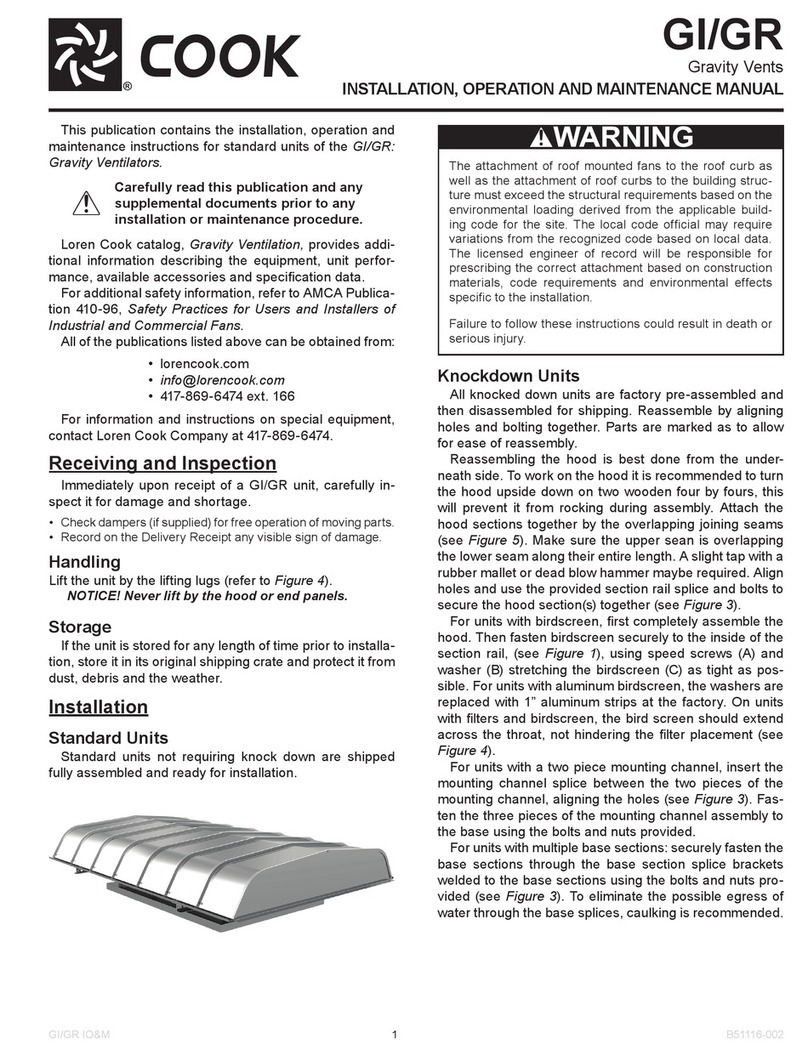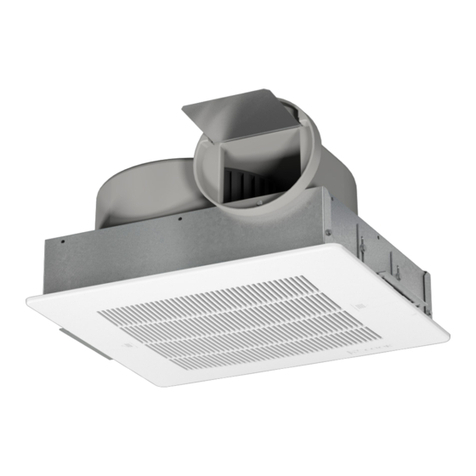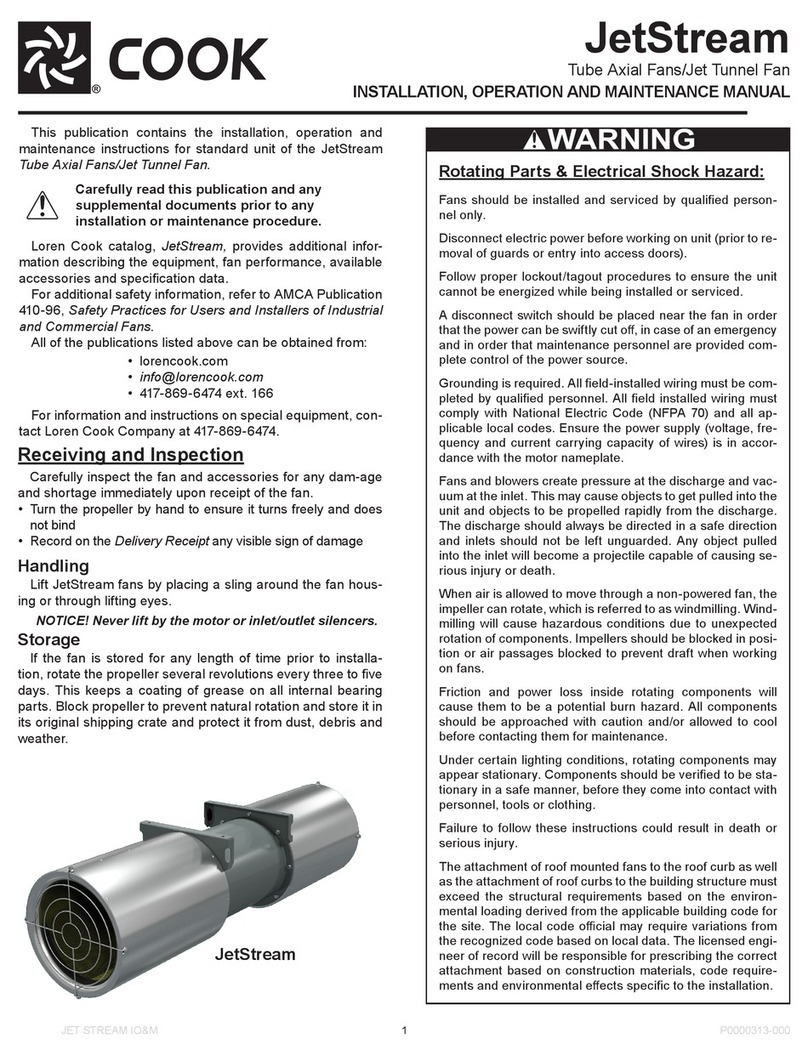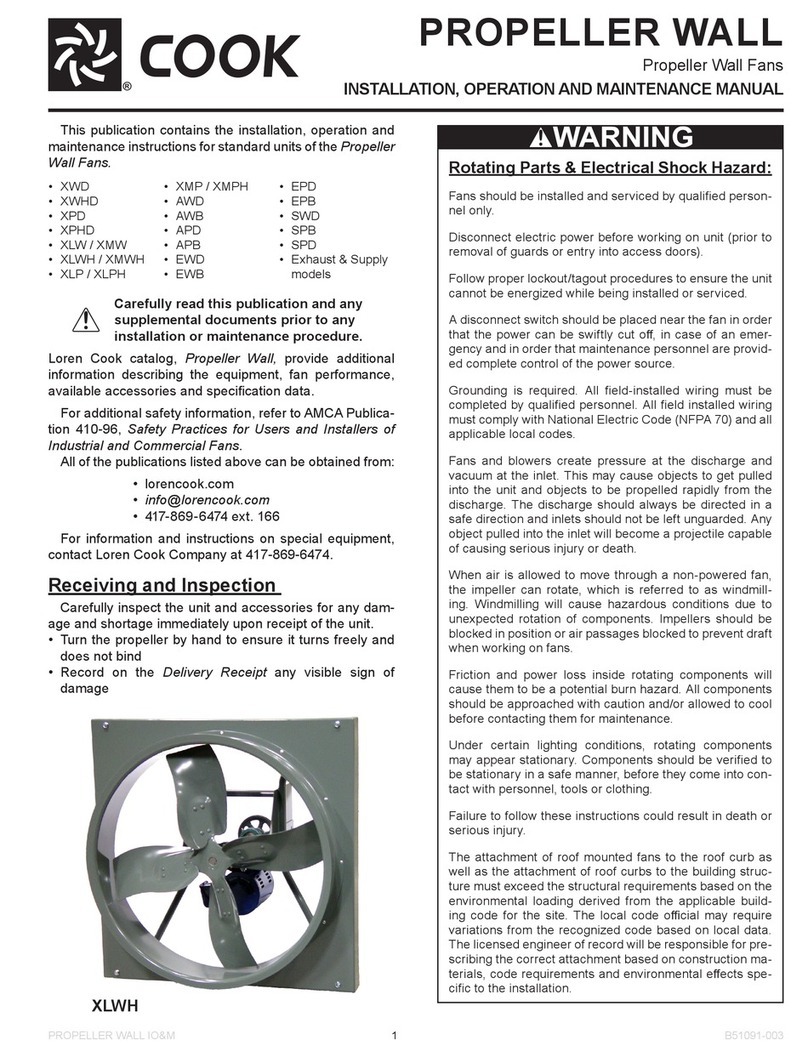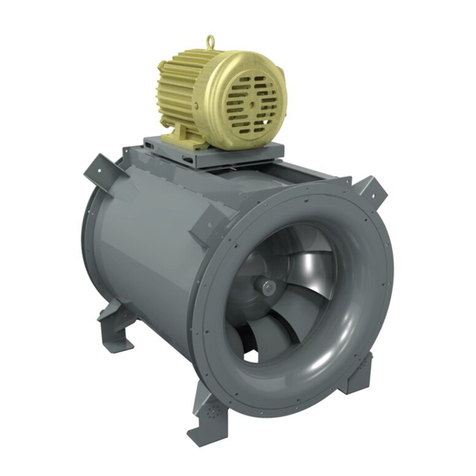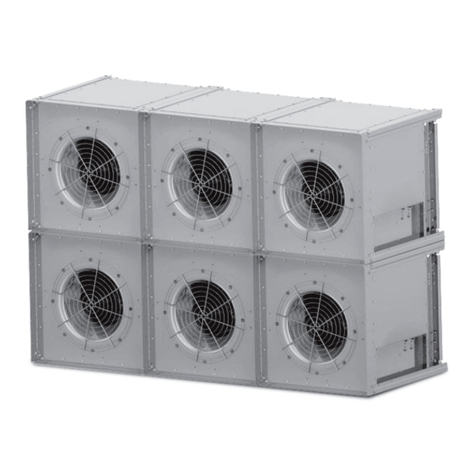
2SQI IO&M B51151-003
Do not change the pulley pitch diameter to change ten-
sion. This will result in a dierent fan speed.
1. Loosen motor plate adjustment nuts on stud bolts and
move motor plate in order that the belts can easily slip
into the grooves on the pulleys. Never pry, roll, or force
the belts over the rim of the pulley.
2. Adjust the motor plate until proper tension is reached.
For proper tension, a deection of approximately 1/4”
per foot of center distance should be obtained by rm-
ly pressing the belt. Refer to Figure 1.
3. Lock the motor plate adjustment nuts in place.
4. Ensure pulleys are properly aligned. Refer to Figure 2.
Tolerance
Center
Distance
Max.
Gap
Up through
12” 1/16”
12” through
48” 1/8”
Over 48” 1/4”
OFFSET ANGULAR OFFSET/ANGULAR
A
X
Y
ZB
CENTER
DISTANCE
(CD)
GAP GAP
Pulley Alignment
Pulley alignment is adjusted by loosening the motor pulley
setscrew and by moving the motor
pulley on the motor shaft.
Figure 2 indicates where to mea-
sure the allowable gap for the drive
alignment tolerance. All contact
points (indicated by WXYZ) are to
have a gap less than the tolerance
shown in the table. When the pul-
leys are not the same width, the al-
lowable gap must be adjusted by
half of the dierence in width. Fig-
ure 3 illustrates using a carpenter’s
square to adjust the position of the
motor pulley until the belt is parallel to the longer leg of the
square.
Final Installation Steps
1. Ensure that all accessories are installed.
2. Ensure that the blower is secured to ductwork.
3. Inspect wheel-to-inlet clearance. Ensure wheel does not
rub against the inlet.
4. Test the fan to ensure the rotation of the wheel is the same
as indicated by the rotation label.
5. Inspect for correct amperage with an ammeter and correct
voltage with a voltmeter.
NOTICE! Do not allow the fan to run in the wrong
direction. This will overheat the motor and cause
serious damage. For 3-phase motors, if the fan is
running in the wrong direction, check the control
switch. It is possible to interchange two leads at
this location so that the fan is operating in the cor-
rect direction.
Storage
If fan is stored for any length of time, prior to installation,
completely ll bearings with grease or moisture-inhibiting
oil. Refer to pages 4-5. Store the fan in its original crate
and protect from dust, debris, and weather. To maintain
good working condition of a SQI when it’s stored outdoors,
or on a construction site follow the additional steps below.
• Cover the inlet and outlet, and belt tunnel opening to pre-
vent accumulation of dust and moisture in the housing
• Periodically rotate the wheel and operate dampers (if
supplied) to keep a coating of grease on all internal bear-
ing parts
• Periodically inspect the unit to prevent damaging
conditions
Installation
To prevent damage to the fan during shipping, motors
5HP and larger, and extremely heavy motors (cast iron or
severe duty) are shipped loose and must be eld mounted
by bolting the motor on the motor mounting plate in the ex-
isting mounting slots.
Wiring Installation
NOTICE! All wiring should be in accordance with
local ordinances and the National Electrical Code,
NFPA 70. Ensure the power supply (voltage, fre-
quency, and current carrying capacity of wires) is
in accordance with the motor nameplate. Refer to
Wiring Diagrams, page 3-4.
Direct Drive
Wire the electrical box on the blower housing.
Belt Drive
The motor can be wired directly since the motor is exter-
nal to the fan.
Leave enough slack in the wiring to allow for motor move-
ment when adjusting belt tension. Some fractional motors
have to be removed in order to make the connection with
the terminal box at the end of the motor. To remove motor,
remove bolts securing motor base to power assembly. Do
not remove motor mounting bolts.
Motor Plate
Motor Plate
Adjustment Nut
Belt and Pulley Installation
Belt tension is determined by the sound the belts make
when the fan is rst started. Belts will produce a loud
squeal which dissipates after the fan is operating at full
capacity. If the belt tension is too tight or too loose, lost ef-
ciency and possible damage can occur.
Figure 3
Figure 2
Figure 1







